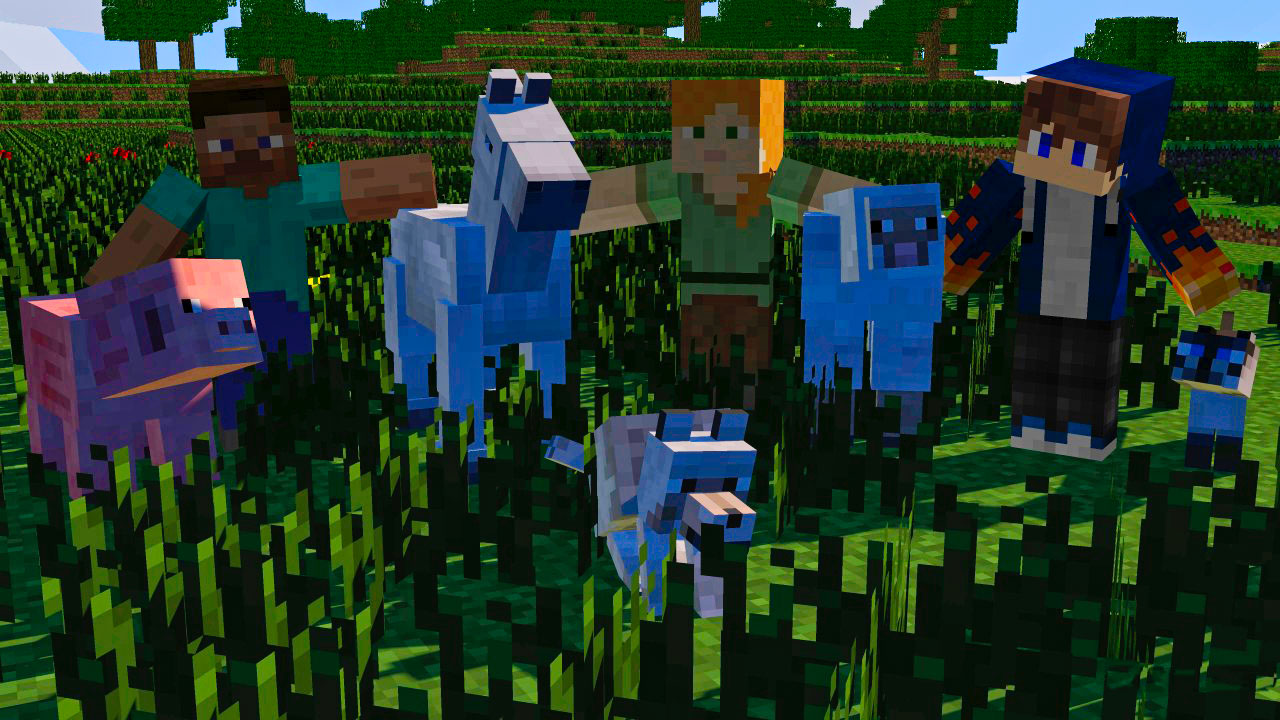A lesser-known fact of Minecraft is that the overall game hides a few mystery mobs. These are special mobs which can be brought in to the game with a /summon command, but otherwise, don’t come in normal gameplay. These particular mobs are the Giant, the Killer Bunny, the Zombie Horse, and the Illusioner. Let’s have a deeper look at all of them.
The Giant
Giants are essentially over-sized Zombies. They appear specifically like Zombies, but are near to 12 blocks high, making them six times how big is their smaller sized Zombie cousins. Technically, their spawn conditions are light levels higher than 11 and significantly less than 8, producing them mathematically difficult to spawn under usual conditions.
Giants now have no Artificial Intelligence. The result of that is that they always encounter south when summoned and stay that method, never wandering, turning their mind, chasing the player, or giving an answer to damage aside from taking knockback. Their viewing path can only just be modified with commands.
Consider them as giant Zombie adornments and nothing else.
The Killer Bunny
The Killer Bunny (previously referred to as The Killer Rabbit of Caerbannog, which really is a mention of the scene in a movie ) is a variant of the rabbit specific to Java Edition that’s hostile to all or any players. Its fur is 100 % pure white with blood-red eye that are horizontal, in comparison to a standard rabbit’s vertical eyes. It could only end up being spawned using the a summon command. It seems with a nameplate over its mind reading “The Killer Bunny””
If the killer bunny sees any participant within a 16-block radius, it’ll hop rapidly towards the player, considerably faster when compared to a normal rabbit. It moves in a method similar compared to that of a spider. Once it closes in, it’ll jump at the participant, dealing a good amount of harm. If the participant strikes at the killer bunny, it’ll run away for a short moment, then go back to lunging at the participant. Killer rabbits are also immune to the Thorns enchantment.
If it cannot look for a participant, the killer bunny will actively look for and attack any wolves as well, including tamed canines. These wolves will, subsequently, attack the killer bunny, resulting in a vicious fight.
On tranquil difficulty, the killer bunny won’t de-spawn, despite its hostile character. It will still strike wolves and tamed wolves, however, not the player.
Naming a rabbit Toast (using the name tag or a renamed spawn egg) will re- consistency it to really have the appearance of a black colored dutch, with a large black and white patch and black fur around the face than the natural black and white spotted rabbit. Other than its name and skin, Toast behaves exactly like it would if it were unnamed. When two Toast rabbits are bred, their offspring do not have the Toast pattern, it has a pattern consistent with the parents’ initial coloring. Like the killer bunny, Toast will not spawn naturally.
Zombie Horse
Zombie horses are just like regular horses, but with a green-skinned zombie appearance, with completely black eyes. They do not spawn naturally in the game and can only be created with a /summon command or with their spawn egg.
Illusioner
Illusioners are unused hostile mobs. They are one of the three villagers, which are offshoot villagers – the others being the vindicator and the evoker.
Illusioners can only be spawned using the /summon command. Currently, there is no illusioner spawn egg.
When killed by a player, any naturally spawned gear (including their bow) has a 8. 5% (9. 5% with Looting I, 10. 5% with Looting II and 11. 5% with Looting III) chance of dropping and will drop with a random durability.
Illusioners will attack players, villagers and iron golems within about 12 blocks. It will attack with its spells, and with its bow.
The illusioner has two spells: a spell that blinds its opponent, and a spell that summons duplicates and makes the illusioner invisible.
The blindness spell will only be cast if the regional difficulty is greater than 2.
Upon first engaging a new opponent, an illusioner casts a Blindness effect that lasts for 20 seconds. It signals this attack by raising its arms and generating black smoke. The illusioner will not cast this spell more than once on the same opponent, unless it has first shifted its attention to another opponent, and then back to that original opponent.
This spell resets the illusioner’s spell cooldown to 1 second, and resets the cooldown for the blinding spell to 9 seconds.
As long as an illusioner is engaged in combat, it will cast an
Invisibility effect on itself that lasts 60 seconds, and will refresh the effect whenever the Invisibility’s time runs out. It signals this spell by raising its arms and generating blue smoke.
When an illusioner becomes invisible – through this or any other method – it creates four false duplicates of itself. These hover and waver at short distances from the actual invisible illusioner, though they will not really space themselves out until the first time the illusioner is usually ever attacked. These duplicates face in exactly the same direction as the illusioner, and move somewhat in step with the original, sometimes appearing to no-clip through walls, ceilings and floors. They will use the shooting animation whenever the original uses its bow, though only the real illusioner can shoot and be damaged.
When the real illusioner is damaged, its duplicates almost all snap back to where the real illusioner is, then quickly snap back out to new positions, signaling the hit.
If an invisible illusioner receives the Glowing effect, all of the duplicates will glow, while the true illusioner will remain invisible.
The duplicates dissolve once the illusioner’s Invisibility effect terminates.
This spell resets the illusioner’s spell cooldown to 1 1 seconds and resets the cooldown for the invisibility spell to 17 seconds.

